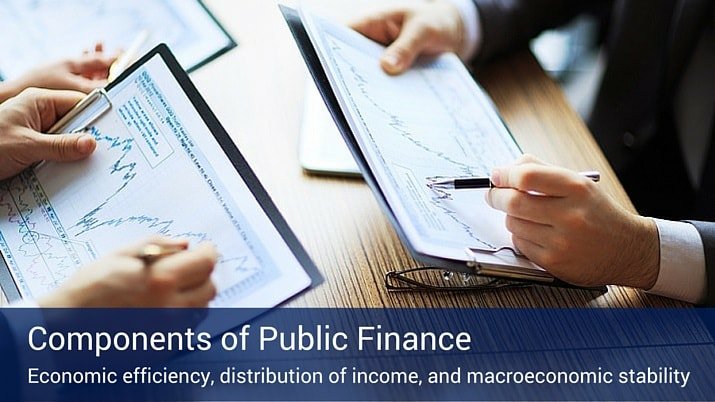Components of Public Finance

Last Updated December 31, 2014
What is Public Finance?
Public finance can be defined as the study of government activities, which may include spending, deficits and taxation. The goals of public finance are to recognize when, how and why the government should intervene in the current economy, and also understand the possible outcomes of making changes in the market. In addition, public finance can involve issues outside of the economy, including accounting, law and public finance management.
Understanding the role of the government and how changes may affect the economy are a few important aspects of public finance professionals. When the government intervenes and takes action within the economy, the outcomes are classified into one of three categories: economic efficiency, distribution of income or macroeconomic stabilization.
Economic Efficiency
Economic efficiency is the standard that economists use to evaluate a variety of resources. Typically, efficiency can be determined by a general formula of ratios and their generated outcomes. The difference between technical efficiency and economic efficiency is the relationship of values people place on things. Values in technical efficiency may be subjective from one person to another. Economic efficiency focuses on eliminating waste to provide as much value as possible. Technical efficiency looks to maximize value, while sacrificing as much as is needed to create the best initiative.
Distribution of Income
Distribution of income is the calculation of the wealth and income of a nation once it is divided by its total population. The overall distribution can be evaluated through a series of statistical studies. Wealth and income are two separate entities. Wealth is the overall value of a population’s physical possessions and financial assets. Income is the exact monetary value of a population’s net intake over a selected period of time. The information gathered from a country’s wealth and income can be a valuable resource to help answer a variety of political, social and economic questions.
Macroeconomic Stabilization
Macroeconomic stabilization is a process by which the stabilization and growth of the economy is monitored through the development of fiscal and monetary policies, laws and regulations. Stabilization of the economy acts as the foundation to economic growth. Without stabilization, the economy is doomed to collapse. To achieve a stabilized macroeconomic environment, a balance is required between the government budgeting, domestic commerce, banking operations, international trade and governing institutions. In order to maintain ongoing macroeconomic stabilization and an optimal level of economic efficiency, the market must be managed to ensure interest rates, business cycles and demand within the economy remains steady.




